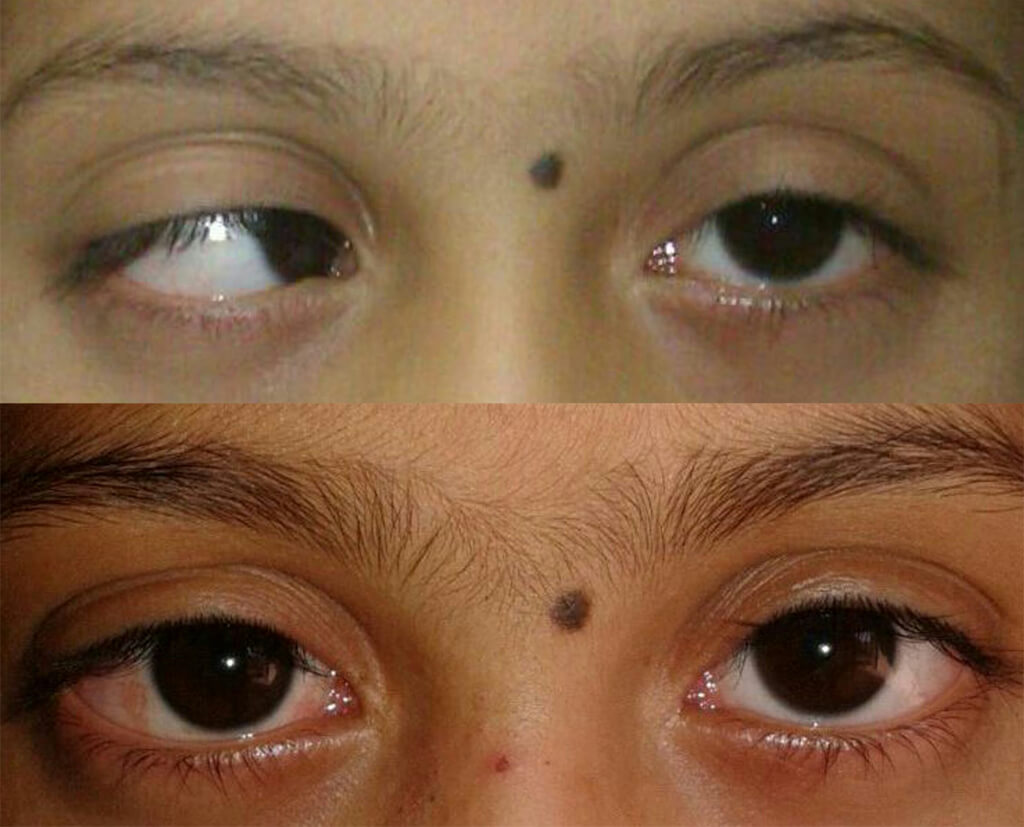Paediatric ophthlmology
& squint

This branch of ophthalmology deals with the eye problems in children using a vision-screening exam and treat the issue on eyes including Squint. They are especially trained professionals to deal with the emotions and needs of children. Therefore, they are better able to engage the children with them and get their corporation to understand their eye issues than another eye doctor.

Squint in Children
Squint is the condition when both eyes do not look together at one direction and concentrate on one point when we look at something. Squints mostly affect young children.
Causes of Squint
- Squint could occur due to vision problems (refractive errors) – If the eyes are short sighted or long sighted or if they have different powers, in order to adjust the eyes and capture the picture, the muscles would react in different directions.
- Family history – Squint can also be a gene carried disorder.
- Premature birth – If a baby is born before fully developing all organs, Squint could also be a possibility.
- Eye conditions – A matured person could be affected by this due to any damages in retina or optic nerve
Symptoms/ Signs of watch out for
Symptoms with children are very difficult to be understood as they do not know to understand it as a problem. Parents should be watchful on how their eyes look and on their actions. Early detection makes the treatment faster and easy.
- Crossed eyes which do not align with each other when looking at things
- Difficult eye movements.
- Poor performance in the classroom.
- Shaky movements of eyes.
- Child trying to bring things closer to eyes.
- Watching TV from very close distance.
- Noticeable White spot in eye.
Associated problems
Squint will result in many long-term problems in children. This includes
- Amblyopia – The eyes are lazy looked and have poor vision resulting from not training the brain adequately to understand the image
- Visual impairment – Untreated Amblyopia between the age of 2 to 8 years creates visual impairment gradually until a total loss. This is because by this age the visual pathways and the vision nerves are matured enough and will not sharpen thereafter.
- Affects the appearance – The child with Squint would feel they are different from others and get reserved from their friends and loses the self-esteem.
- Affect the total future of a child – Living with Squint means your child unfortunately sacrificing certain dreams of future. For instance being a policeman or a pilot requires good eyesight and imagine your child’s dream is buried because of an ignored Squint?
Treatment for Squint
According the type of Squint, Ophthalmologist would recommend a treatment method.
- Eye patching – This is used to treat Amblyopia if detected very early. The good eye is patched and view is blocked using special glasses or eye drops and the child is let only to use the affected eye. Patching provides the necessary stimulus for the eye to develop and thus reduces amblyopia and improve. The treatment period varies and would be stopped after correction or the doctor observes no further improvement.
- Eye Glasses – Glasses are recommended if Squint is detected after Amblyopia turning out to short sighted or longsighted vision trouble. Usually these glasses are made with plastic lens and the child may be needed to wear this until Squint and vision are corrected.
- Eye exercises – These are special exercises to make the eyes work together and recommended by the specialist together with any other treatment.
- Eye injection – An injection will be put to one of the muscles to weaken it and make all muscles function together. Gradual changes could be seen in around 3 months.
- Squint Surgery – This is considered only as the last attempt. This will involve moving a muscle slightly or shortening a muscle. This is a very safe and small surgery to recover Squint immediately.

